Pitcher Plant
- October 31, 2023
- 0 comment
The pitcher plant, a fascinating and carnivorous plant, is renowned for its distinctive and ingenious method of capturing and digesting insects. These remarkable plants primarily inhabit wetlands and acidic, nutrient-poor soils, often adapting to environments where other plants struggle to thrive.
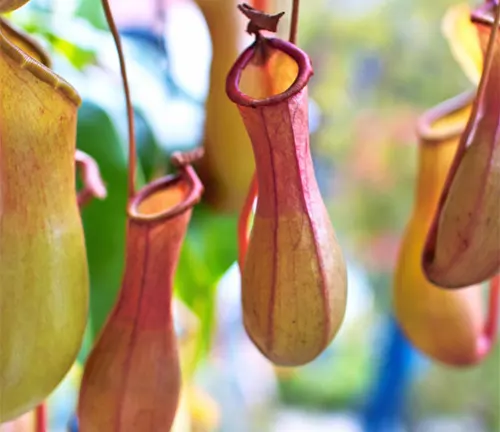

The defining feature of the pitcher plant is its specialized leaf structure, which is modified into a unique, tubular shape resembling a pitcher. Within this elongated leaf, a reservoir of liquid is stored, usually a combination of rainwater and digestive enzymes. The rim of the pitcher is often adorned with nectar-secreting glands that attract unsuspecting insects.
These curious insects are lured by the sweet nectar but soon find themselves slipping on the slippery inner surface, falling into the liquid-filled trap. Once trapped, the digestive enzymes go to work, breaking down the insect’s body into essential nutrients, which the plant then absorbs to supplement its nutrient-poor surroundings. The pitcher plant’s remarkable adaptations and its intricate relationship with its prey make it a captivating and unique member of the plant kingdom, showcasing the ingenious strategies nature employs for survival.
| Characteristics | Description |
| Scientific Name | Nepenthes (genus) and Sarracenia (genus) |
| Habitat | Typically found in wetlands, bogs, and areas with acidic, nutrient-poor soils. |
| Leaf Structure | Specialized, tubular-shaped leaves modified into pitchers. |
| Trapping Mechanism | Insects are lured by nectar-secreting glands on the rim of the pitcher and fall into the liquid-filled trap. |
| Digestion | The pitchers contain a mixture of rainwater and digestive enzymes that break down captured insects. |
| Nutrient Absorption | The plant absorbs nutrients from the digested insects to supplement its nutrient-poor environment. |
| Varieties | There are several species of pitcher plants, including Nepenthes, Sarracenia, and others, each with its own unique characteristics. |
| Size | Pitcher plants come in various sizes, with some small enough to fit in a windowsill planter and others that can grow several feet tall. |
| Appearance | Pitcher plants can have different colors and markings on their pitchers, often serving as an adaptation to attract prey. |
| Carnivorous Adaptation | These plants have evolved to thrive in habitats where other plants struggle by developing carnivorous traits to acquire essential nutrients. |
| Conservation | Some species of pitcher plants are considered vulnerable or endangered due to habitat loss and poaching. Conservation efforts are in place to protect them. |
Botanical Beauty of “Pitcher Plant”
Pitcher plants, with their captivating and exotic appearance, stand out as botanical wonders. These carnivorous plants, belonging to the Nepenthes and Sarracenia genera, exhibit a unique and alluring beauty. Their leaves are marvelously transformed into elongated, tubular structures known as pitchers, adorned with an array of colors, patterns, and textures. These botanical marvels have long fascinated botanists, nature enthusiasts, and even casual observers, drawing attention with their unusual shapes and mesmerizing allure.
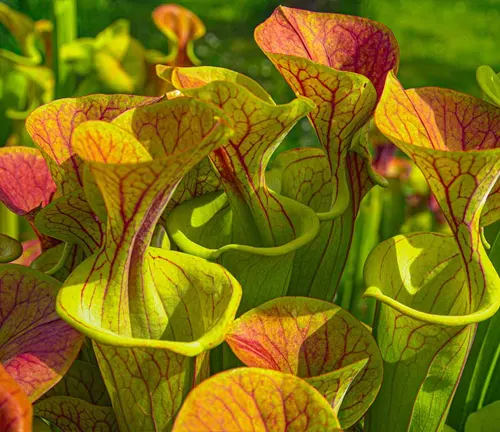
Woodland Elegance

In their natural habitats of wetlands, bogs, and nutrient-poor soils, pitcher plants exude an elegant charm that complements the landscape. They often form dense colonies, creating picturesque scenes where their pitchers rise like slender chalices amidst the lush greenery. The plant’s ability to adapt to challenging environments showcases the elegance of nature’s design, as they provide a touch of sophistication to these often harsh and unforgiving ecosystems.
Ecological Importance


Pitcher plants play a crucial role in the ecological web of their habitats. Their carnivorous nature helps control insect populations, contributing to the overall balance of local ecosystems. In addition, they provide habitats for microorganisms and, in some cases, shelter for small organisms within their pitchers. This complex interplay within the ecosystem underscores their importance and their value beyond their aesthetic appeal.
Cultivation and Conservation
Pitcher plants have also found their way into the hearts and homes of plant enthusiasts, who cultivate them in controlled environments. However, the conservation of these unique plants is of paramount concern due to habitat loss and over-collection. Conservation efforts are underway to protect these plants and their native habitats, ensuring their survival for future generations.
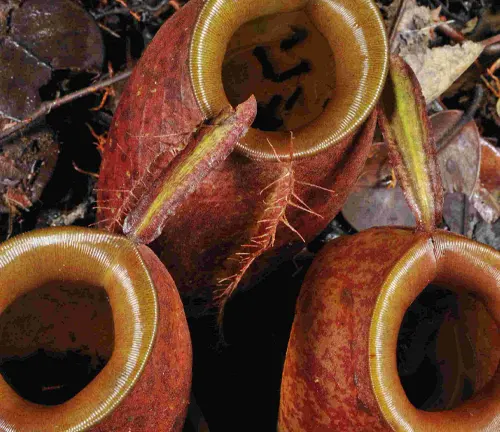
Fragrance
One of the lesser-known aspects of pitcher plants is their subtle yet intriguing fragrance. The nectar-secreting glands on the rim of the pitcher emit scents that attract unsuspecting insects. The sweet aroma acts as an irresistible lure, demonstrating the plant’s remarkable adaptation in securing its prey.
Soil Stabilization

Pitcher plants, with their deep root systems and ability to grow in challenging soil conditions, help stabilize soil in areas prone to erosion. Their presence in wetlands and bogs aids in maintaining the structural integrity of these sensitive ecosystems, which is vital for their overall health and functioning.
Common Uses
Beyond their ecological and horticultural significance, pitcher plants have found their place in various cultural practices. In some indigenous communities, these plants hold traditional and spiritual value, representing a connection to the natural world. They have also inspired artists and designers, their unique forms serving as a muse for creative endeavors.

Benefits
Pitcher plants exemplify the ingenuity of nature’s design, showcasing both aesthetic beauty and ecological importance. Through their role in controlling insect populations, soil stabilization, and adaptation to challenging environments, these plants contribute to the overall health of their ecosystems. Moreover, their unique appearance and subtle fragrances captivate the human imagination, making them objects of fascination, inspiration, and even spiritual significance. It is our collective responsibility to ensure the conservation and preservation of these botanical wonders, allowing future generations to continue to marvel at the elegant beauty and ecological importance of the pitcher plant.
Different Species
Nepenthes (Tropical Pitcher Plants)
Nepenthes alata
Known for its elegant, narrow pitchers and widespread distribution in Southeast Asia.
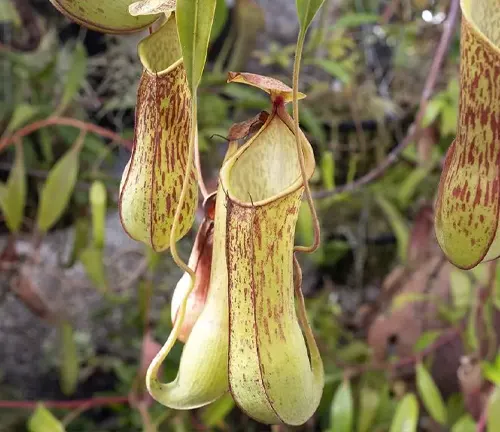
Nepenthes ventricosa
Native to the Philippines, it is popular among horticulturists for its distinctive, rotund pitchers.
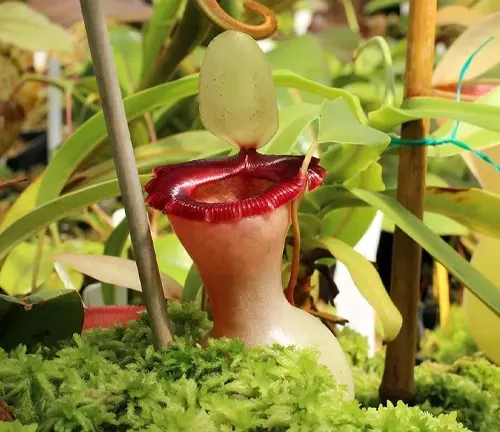
Nepenthes rajah
The largest of all Nepenthes species, found in Borneo, and known for its massive and striking pitchers.

Nepenthes bicalcarata
Distinguished by the presence of two fang-like structures on the rim of its pitchers, this species is found in Borneo.
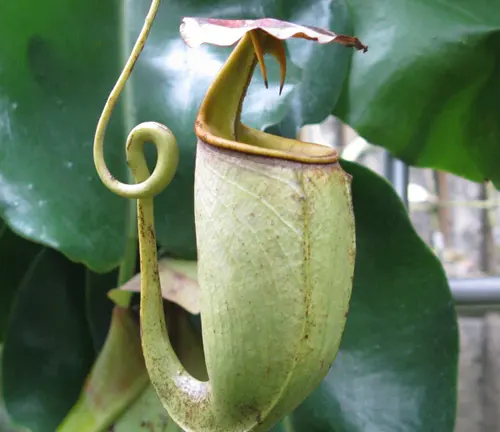
Nepenthes rafflesiana
Native to Borneo and the Malay Peninsula, it is notable for its wide, bowl-shaped pitchers.

Sarracenia (North American Pitcher Plants)

Sarracenia purpurea
A cold-hardy species found in North America, known for its distinctive hooded pitchers and a wide range of color variations.

Sarracenia leucophylla
Native to the southeastern United States, it features tall, slender pitchers with prominent white or pale green coloration.

Sarracenia flava
Recognizable by its bright yellow pitchers and found in various southeastern states.
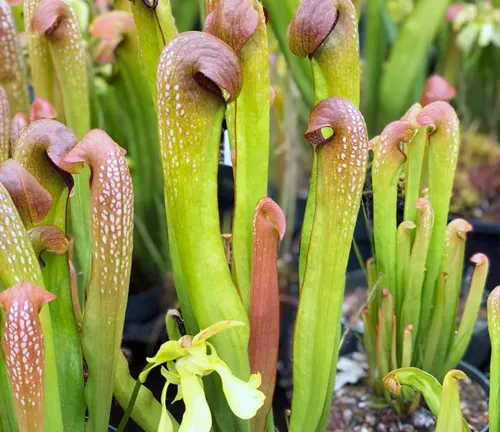
Sarracenia minor
A smaller species with green and red-tinted pitchers is found in the southeastern United States.
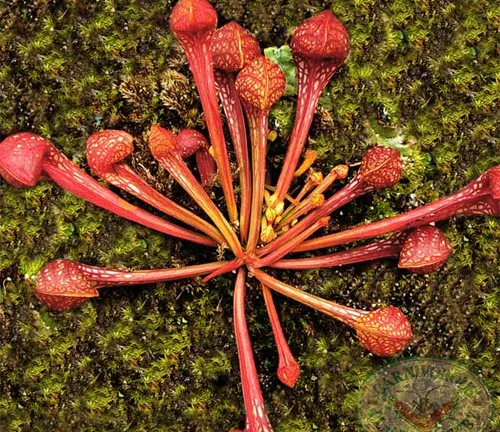
Sarracenia psittacina
Unusual among pitcher plants, it has flat, wing-like structures on the upper portion of its pitchers and is found in the Gulf Coast region.
Frequently Asked Questions (FAQs)
- What is a pitcher plant?
A pitcher plant is a type of carnivorous plant known for its unique leaf structure, which forms a tubular shape resembling a pitcher. These plants are adapted to capture and digest insects. - How do pitcher plants trap insects?
Pitcher plants lure insects with nectar-secreting glands on the rim of the pitcher. Insects slip and fall into the liquid-filled trap, where they are digested by enzymes. - Where are pitcher plants found in the wild?
Pitcher plants are typically found in wetlands, bogs, and areas with acidic, nutrient-poor soils. They can be located in regions around the world, such as Southeast Asia, North America, and parts of Europe. - Can pitcher plants be grown as houseplants?
Yes, many pitcher plant species can be cultivated as houseplants, but they require specific care, including high humidity, bright light, and distilled water. Some are better suited for outdoor cultivation in appropriate climates. - Are all pitcher plants carnivorous?
Yes, all pitcher plants are carnivorous, and they rely on capturing and digesting insects to obtain essential nutrients that are lacking in their native soils. - What is the ecological importance of pitcher plants?
Pitcher plants help control insect populations and contribute to the balance of their ecosystems. They also provide habitats for microorganisms and small organisms within their pitchers. - How can I conserve pitcher plants in the wild?
Conservation efforts include protecting their natural habitats, preventing habitat destruction, and discouraging the illegal collection of wild specimens. Supporting conservation organizations can also help. - Are there different species of pitcher plants?
Yes, there are various species of pitcher plants, with some belonging to the Nepenthes genus (tropical pitcher plants) and others to the Sarracenia genus (North American pitcher plants), each with unique characteristics. - What are some common challenges in growing pitcher plants as houseplants?
Challenges can include maintaining the right level of humidity, providing proper lighting, and ensuring the quality of water used for irrigation, as many are sensitive to minerals and chemicals. - Do pitcher plants have any cultural or traditional significance?
In some indigenous communities, pitcher plants hold traditional and spiritual value, symbolizing a connection to the natural world. They have also inspired art, design, and creative endeavors.



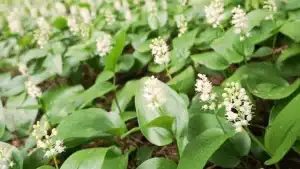
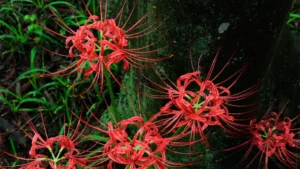


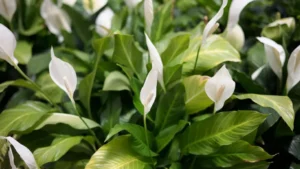
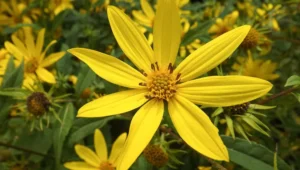
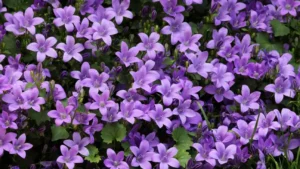

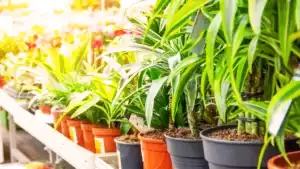
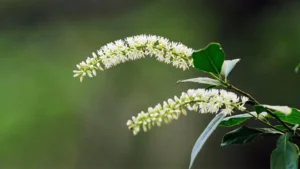

Leave your comment